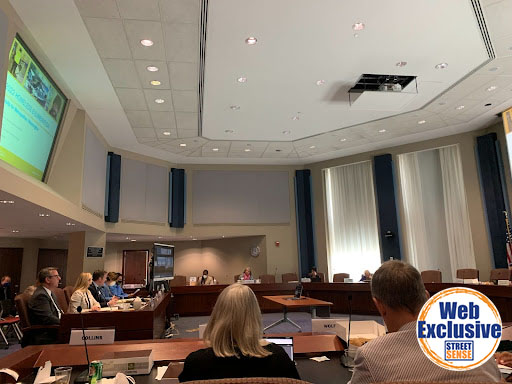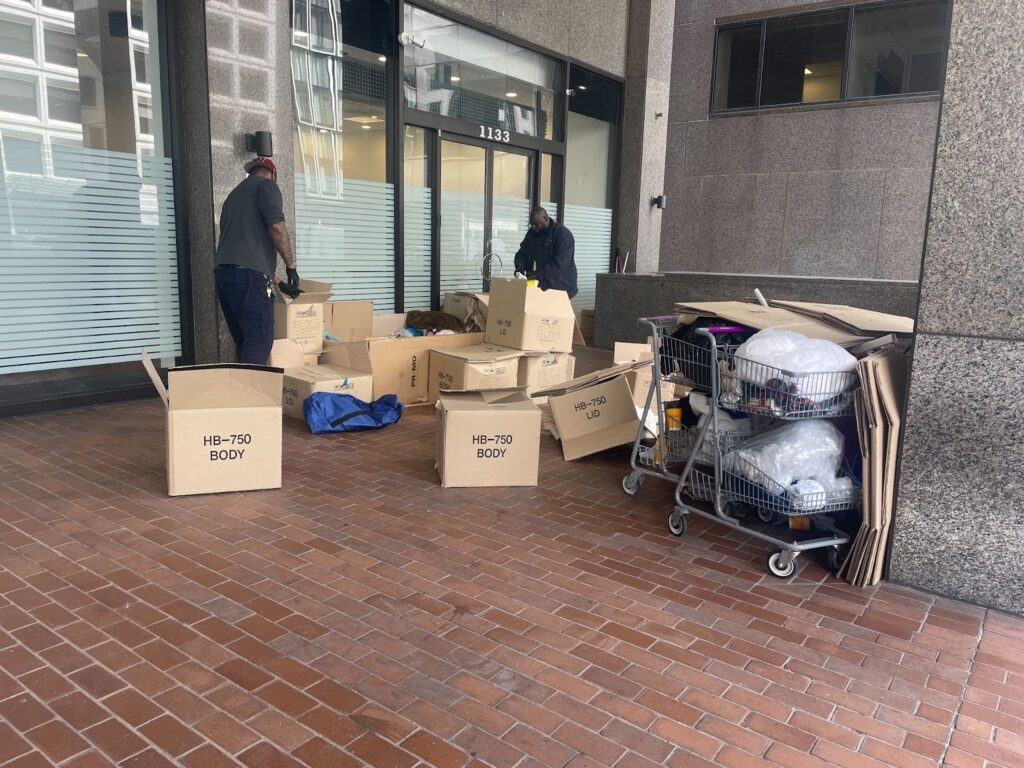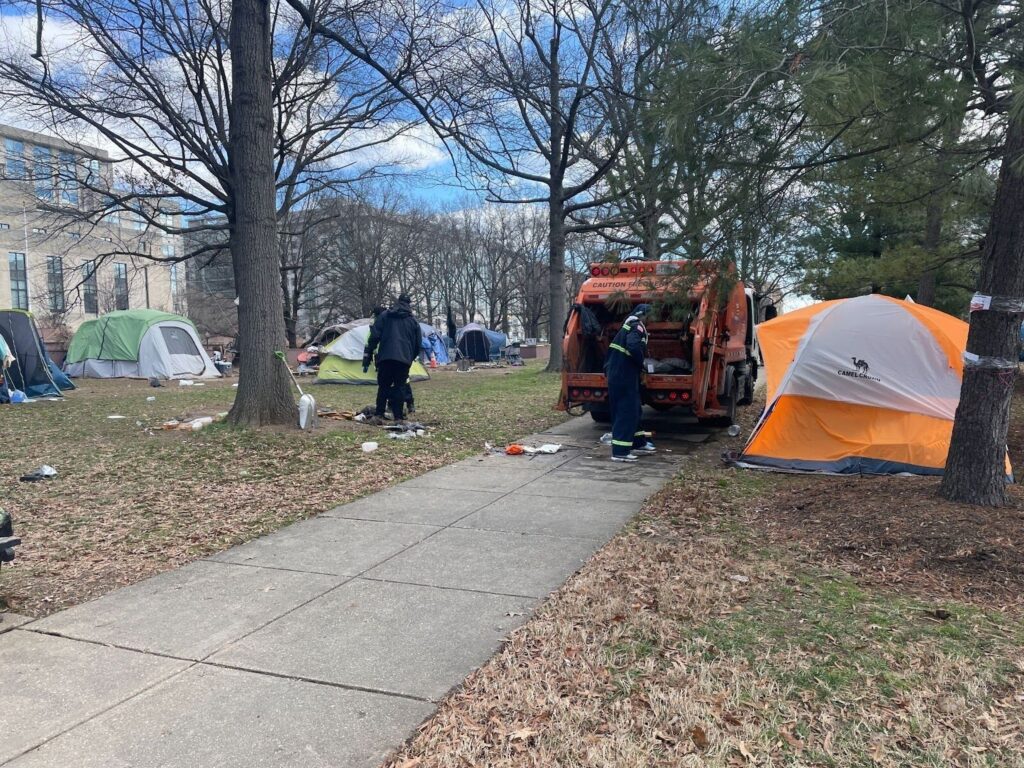The total number of people experiencing homelessness in the Washington region is at the lowest point in over 20 years, according to a report released by the Metropolitan Washington Council of Governments (COG) earlier this month.
At a council meeting on May 11, the co-chairs of COG’s Homeless Services Committee, Elisabeth Young and Tom Barnett, announced the results of this year’s Point in Time (PIT) count in the region. Conducted on a single night every year, the PIT Count is an annual census of the number of sheltered and unsheltered individuals experiencing homelessness in a given jurisdiction.
The results of this year’s count, which occurred on Jan. 26, revealed the lowest number of persons experiencing homelessness since the region-wide count began in 2001. However, the same COG report in which the results were published also notes that the PIT count is not an effective tool for measuring the full scale of the homelessness crisis. The report identifies several variables that can impact the count’s accuracy in any given year, including weather, surveying methodology and the availability of trained outreach workers to conduct the count. There are also limitations to the PIT count inherent to its methodology — for instance, its short time frame, as well as segments of the homeless population that are hard to reach by volunteers conducting the count on foot.
According to the report, there are 7,605 people experiencing homelessness in the region this year. This is an 8% decrease from last year and a 32% decrease from 2017, when 11,128 individuals were counted, according to the online database of PIT Count reports published by COG in past years.
Young said that homelessness prevention and diversion programs, coupled with tenant protections through eviction moratoriums, had been successful in reducing the flow of people into the region-wide homeless services system.
“Permanent housing is the ultimate solution to ending homelessness,” Young said.
In 2022, there was an 11% increase in permanent housing placements compared to 2018, she said. The increase in the number of people placed in some form of permanent housing, Young said, has “constrained the incidence of homelessness in the region, and has helped prevent it from growing unchecked since 2018.”
Young said that the success of the permanent housing strategy reinforces the need to provide more affordable housing resources to low income households in the region, to prevent people from experiencing homelessness in the first place.
As the economy recovers, she said, there is a need for more robust workforce development programs that can assist low-wage and low-skilled workers in securing better-paying jobs, in order to help them better afford the high cost of housing.
Infogram
The number of people experiencing homelessness in the Washington region from 2017 to 2022. Chart by Hajira Fuad
In addition to a decrease in the total number of individuals experiencing homelessness in the region, a decrease was also reported across every subgroup of the unsheltered population. It was found there was a 50% decrease in families experiencing homelessness in the region since 2018. The number of single adults experiencing homelessness had decreased by 9% since 2018, and the number of homeless veterans had decreased by 40% since 2018, according to the report.
The decrease in the number of families, single adults, and veterans experiencing homelessness in the Washington region since 2018. Chart by Hajira Fuad
Since 2018, the incidence of chronic homelessness has also decreased by 16%. An individual is chronically homeless when they have a disability and have been homeless for at least 12 months, or on at least four separate occasions in the last three years, according to the U.S. Department of Housing and Urban Development.
While the results of the 2022 PIT Count demonstrated that significant progress has been made in the fight to end chronic homelessness in the Washington region, data collected from the count also showed that people of color are disproportionately represented in the region’s unsheltered population.
The nine participating jurisdictions in the region also track demographic data on people experiencing homelessness in addition to population totals, Young said, in order “to better understand disparate impacts and to address gaps in our regional homelessness response.”
73% of adults experiencing homelessness in this year’s PIT count identify as Black, she said, whereas only 25% of the region’s population identify as Black.








